state of ruin
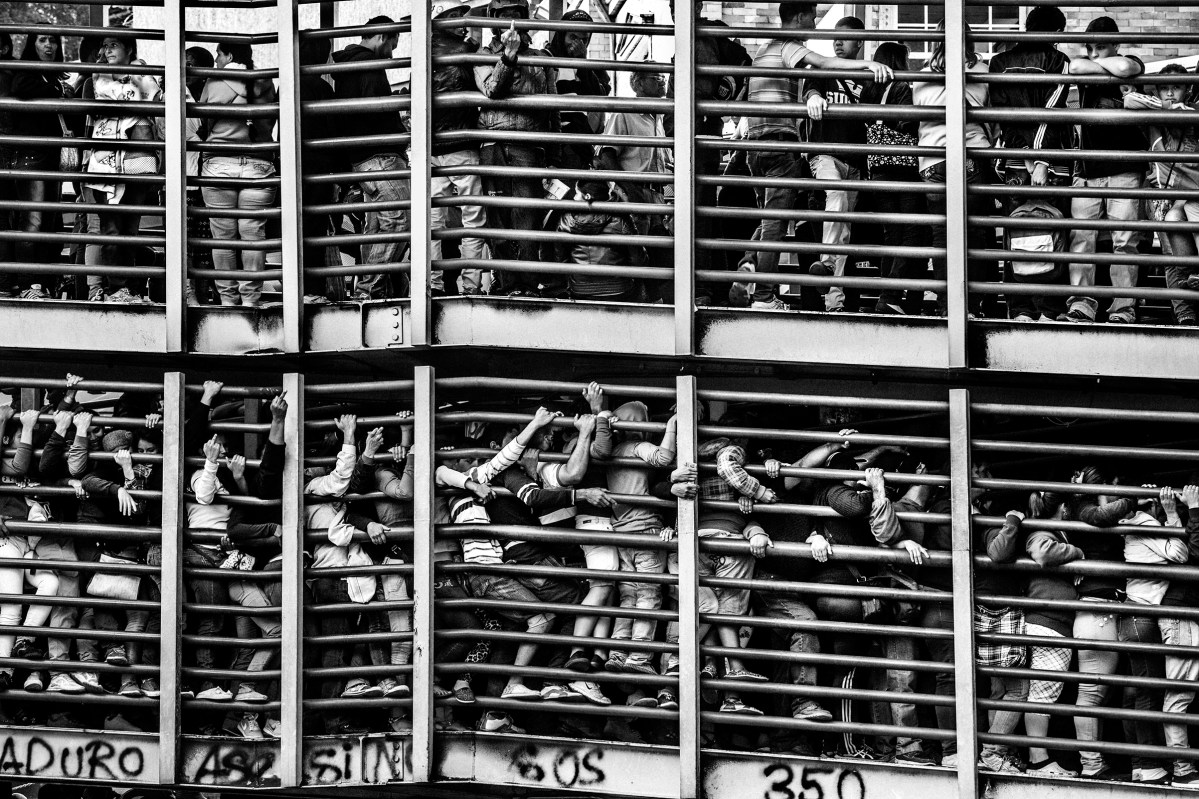
Oscar B. Castillo
Venezuelan photographers who have watched their society crumble reflect on the images that have moved them most
BY ANDREW KATZ
The latest wave of demonstrations offers President Nicolás Maduro his biggest test since he assumed power four years ago, after the death of his mentor Hugo Chávez. Venezuela has experienced a slow-burn collapse of epic proportions, all while sitting atop the world’s largest known oil reserves. Once the continent’s largest economy, it can no longer feed its own people. Once a destination for medical tourists, its hospitals can barely treat basic illnesses. Mass gatherings against the government are frequent; dozens of protesters have been killed in recent weeks, further igniting a population that is starving and exhausted.
Venezuela also was once a hub for photographers but in recent years, as democracy has frayed, it has tightened. Meridith Kohut, a contributor to The New York Times, has lived there for years and continues to build one of the industry’s strongest portfolios of the crisis. Spanish photographer Alvaro Ybarra Zavala has spent significant time in the country, emerging with a soulful black-and-white portrait of a state being ruined. But it’s a committed group of local photojournalists, from freelancers to stringers, who have devoted their days to keeping Venezuela on the international radar.
They are in the streets with the protesters and the officers, breathing in the same tear gas. They are in the lines for food and other basic goods, watching the same citizens who arrive empty-handed before sun-up leave empty-handed as night falls. They attend the funerals, and hear the wails of the parents of the dead.
TIME asked eight of them to select an image from their archives. Their tales, which have been lightly edited for clarity and brevity, offer a window into Venezuela’s reality.
Alejandro Cegarra
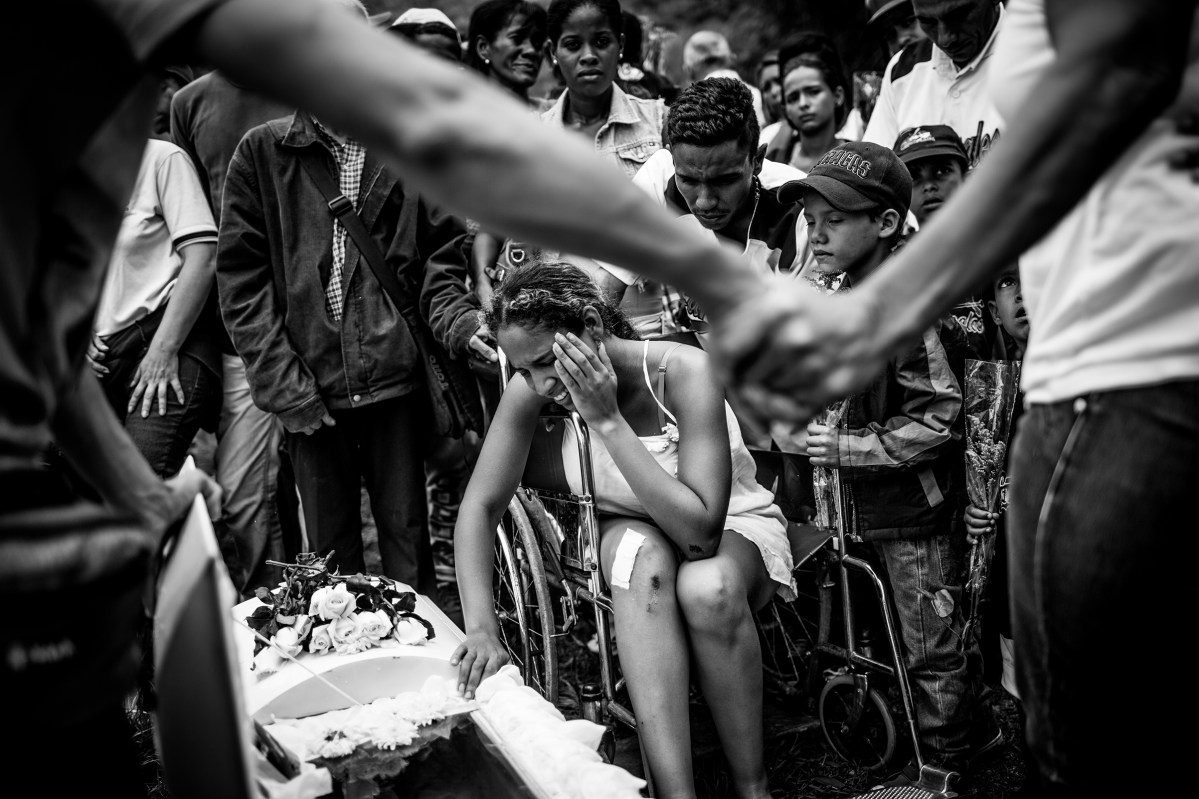
A young boy’s funeral after a grenade explosion. Alejandro Cegarra—Native Agency
Two men were escaping from the police in the low-income 23 de Enero neighborhood of Caracas in May 2016 when one man threw a grenade with the hope of distracting the officers. What they didn’t notice was that María was there with her son Gabriel. He was 5 years old when the grenade exploded.
His funeral the next day was beyond emotional. Time moved slower than usual. The gray sky added to the sadness. A small crowd gathered near the white coffin as his baseball teammates sang. You could hear his mother crying in a wheelchair. She couldn’t say a word without tears. The rest of the people were crying too, but in silence.
For the first time, I prayed. I’m not a religious person but somehow just taking photos wasn’t enough. I felt the need to try to help his soul to find some peace. The camera wasn’t a shield. I didn’t want it to be a shield and I was crying just like everyone else. To this day I still think about Gabriel and his mother, and this encourages me to talk to the people I photograph and try somehow to understand and make other people know the pain and the grief of losing a loved one.
Fabiola Ferrero
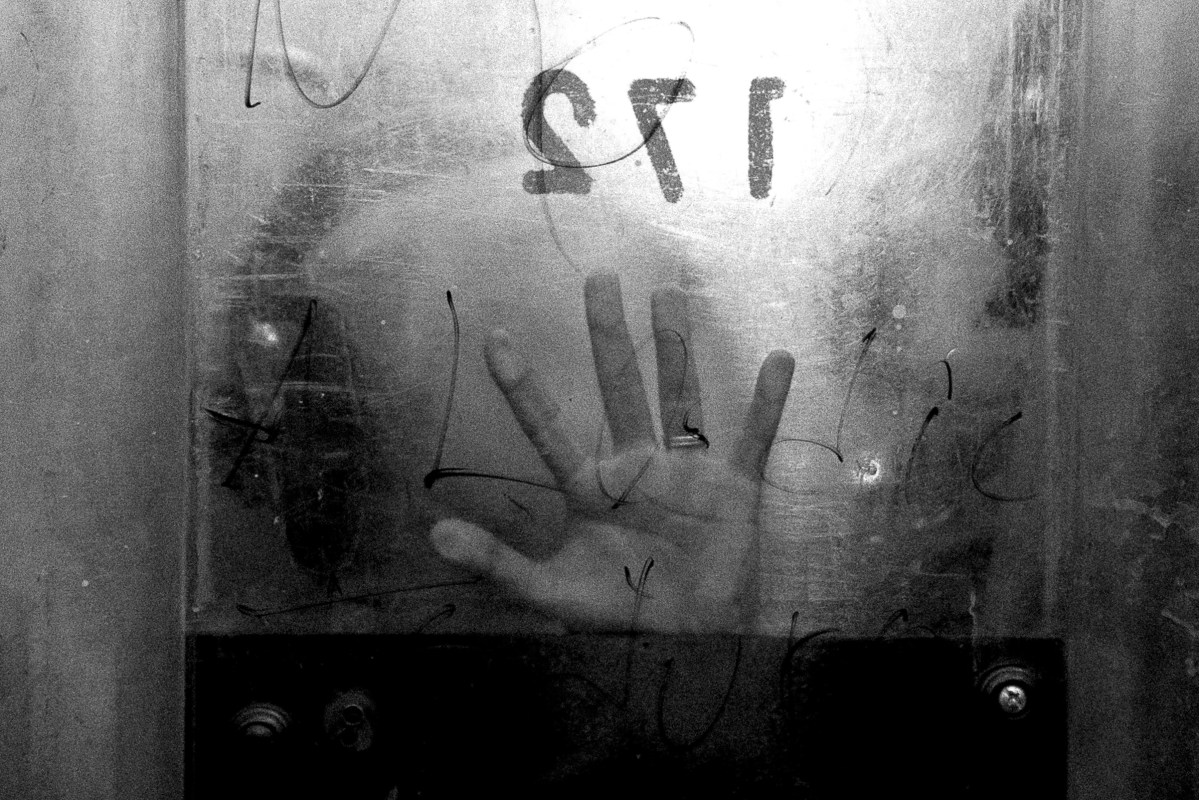
A female police officer holds up her shield during an April protest in Caracas. Fabiola Ferrero
There are looks that say more than actions. Sometimes, when you see a National Guard member or a police officer at the front of the line, you can tell he or she doesn’t want to be there. I have seen officers cry in the lineup. It could be fear. It could be frustration. When that happens, everyone looks at them. It is not a common sight.
Some protesters decide to take advantage of the emotion. Yell at them. Make fun of them. Others talk to them, saying, “You have an option, you can decide not to be there. I know this situation also affects you and your family.” They just keep on crying behind their shields, silently, taking orders.
The hand in the picture, from Caracas in April, belongs to a woman. That day the protest was not a big one. The wave of demonstrations was just starting. But one guy decided to kick her repeatedly, pushing her shield and insulting her and all the others around her. Before the tension grew between protesters and security forces, before the death started, this woman did not move. She just held the shield with one hand and pushed it back to defend herself. Eventually people asked him to stop. She kept the hand there, behind the shield, silent. But ready for the next attack.
Oscar B. Castillo

Hundreds of people in the Los Teques area, southwest of Caracas, wait for their chance to get basic products in August 2016. Oscar B. Castillo—Fractures Collective
The lines are brutal. It’s almost 8:30 a.m. and many people have been waiting for food for four or five hours. All over Venezuela, similar scenes are unfolding. Without breakfast and without a break the people remain, moved only by the need to get something affordable to eat.
The lines are brutal. The sun, the heat, the hundreds of desperate people, the time passing and the uncertainty about what products will be at the end of the line, or if there will even be any. People are full of anger, sadness and frustration. They don’t control their lives anymore. Their gazes are lost as their minds process thousands of calculations per hour. They think about how long a minimum wage salary lasts when there is rent and school tuitions to pay. And what about the transportation, the uniforms, the supplies? They haven’t yet purchased medicines, nor paid for the electricity, the water, the phone, the clothes, the food.
The lines are brutal. A kilo of flour or rice, maybe toothpaste or a pack of toilet paper—today could be the day they’ll find one of those luxury products. If they’re lucky, they might even get two options, maybe a liter of cooking oil, or a kilo of sugar. The mind gets lost while dreaming but not for too long. The line moves and the bodies completely fill the space. Places were reserved before dawn; many people spent the night there, others paid the people who sell the first spots.
I see the scene and wonder how it is possible to be so indolent. How can the leaders play with the food of a whole population? We will see if they will be able to stop the anger that follows the hunger—a brutal thing, like these endless lines.
Adriana Loureiro Fernández
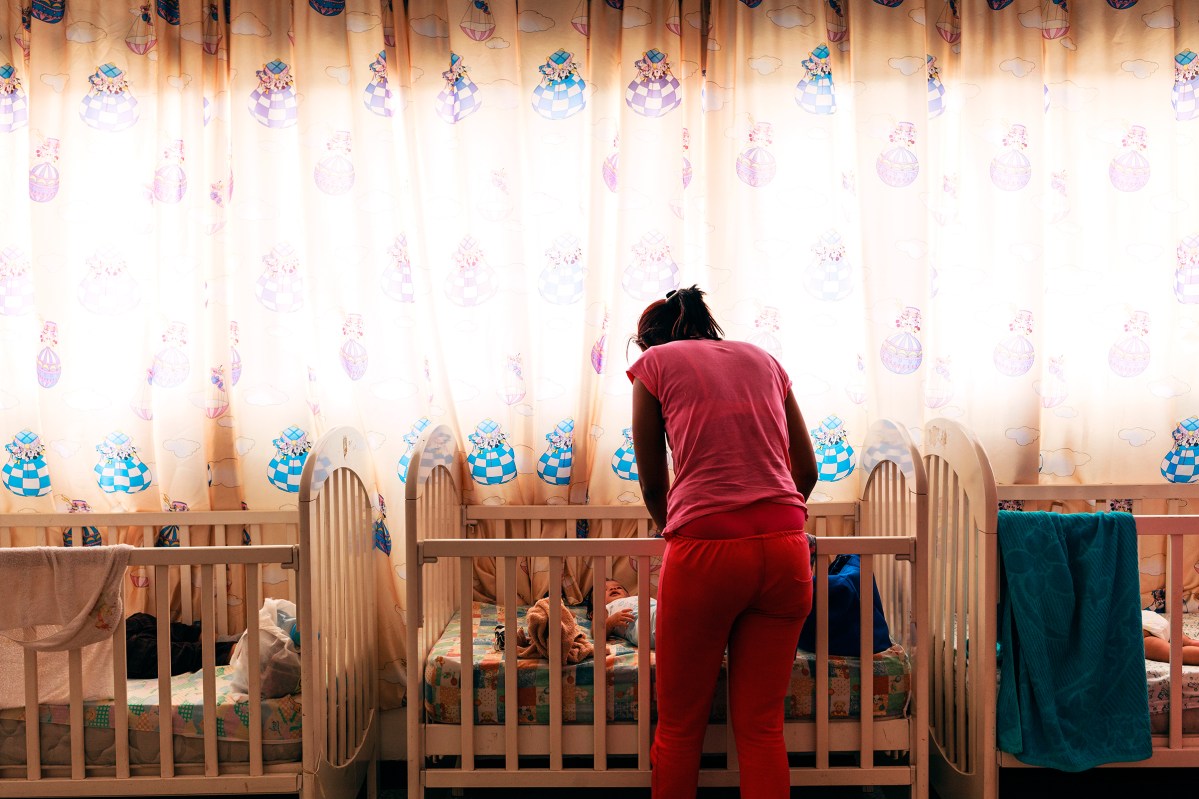
A nursery at a women’s prison in Los Teques. Adriana Loureiro Fernández
In March 2016, I was freelancing for Efecto Cocuyo, a Venezuelan digital news outlet. We visited a total of three prisons around the country. Non-profits claimed overpopulation and human rights violations, and prison authorities were determined to prove this was false. We wanted to know the truth.
The third prison we visited was the National Institute of Female Orientation in Los Teques, outside Caracas. It is the only prison exclusively for women in Venezuela. The visit was guided by someone from the department who would neither let us interview anyone without supervision nor view the cells where the women lived. We sat down with the director for lunch: there was a big plate of food with chicken, rice and salad, even though many of the women had secretly told us they barely ate. The food shortages in the country had affected them too: the portions were getting smaller with time, they said.
I stumbled upon this nursery while they toured us around the kitchen. There were around 15 cribs in the room. It was one of the most calm and well-kept spaces that I had seen since we started the assignment. It almost made me forget that we were in a prison, that these women and their children were in jail. It was quiet, calm, neat. Women in the kitchen listened to music and danced while they cooked. We never got to see how the mothers lived or where they slept but the children—even the elders—seemed happy.
If I ever have to explain my country to other people, it is under those terms: people in a terrible situation always find these little places that make them forget about how terrible it all is. I so often find myself in the middle of a terrifying setting and the breeze blows, or the sun sets, and I am left in a purgatory: between heaven and hell, between beauty and terror.
Manaure Quintero
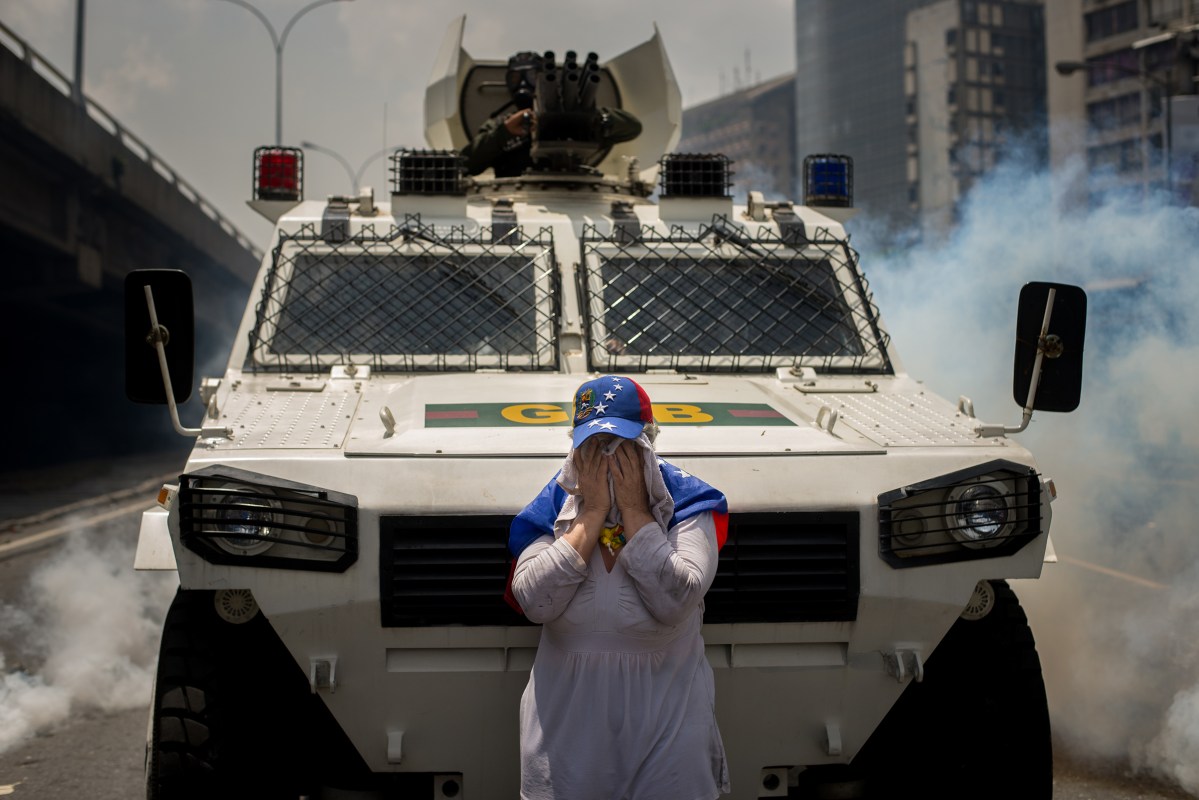
A woman wipes tear gas from her eyes in Caracas in April. Manaure Quintero
Alongside many colleagues, I was covering the big demonstration on April 19, the same day in 1810 that independence was declared from the Spanish empire. This day was different. For the first time in my seven years as a photojournalist, I saw a different mood in the air. I felt like there wasn’t fear. When clashes began, I saw this older woman start pleading with security forces to stop repressing; she did it so peacefully. But the protesters, covered with shields, took her away.
About an hour later, I saw this woman again when armored vehicles, known as “the Rhinos,” appeared on the highway. She walked very slow toward one. A National Guard member appeared and began launching tear gas cartridges. Even with this enormous piece of steel pushing her, she was fearless. And that’s the reason why this picture is significant for me, because it shows that people who used to be afraid to demonstrate, the older generation, are now in the streets. This was a turning point.
Cristian Josué Hernández
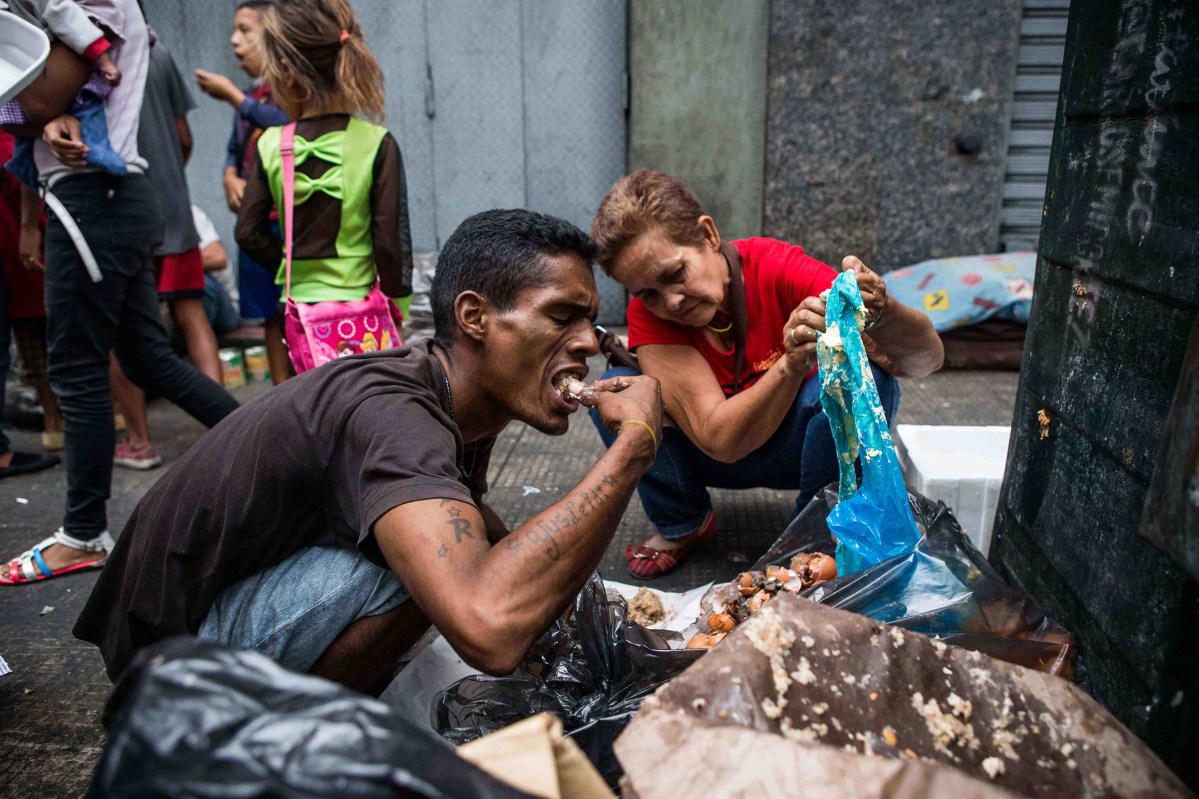
A man eats bits of food found in trash in Caracas in September 2016. Cristian Josué Hernández—Climax
A few blocks away from the presidential palace, along one of the busiest avenues of Caracas, I found a group of 15-25 people around a trash container. There were entire families digging through filth hoping to find something: men from all ages, their mothers and little brothers, their wives and children, too. They waited until the evening, when restaurants and bakeries were closing, to pick the trash bags and feed on leftovers like raw meat, chicken bones, bread, dough or a mixture of rice, vegetables and sauces. On good days they eat enough and collect food bags that they can store or take home.
I was surprised they allowed me to take pictures and get so close. Actually, they wanted me to know that most of them did not live on the street, but have to resort to do this to bring food to their tables. They also scavenge, recycle and sell paper, cardboard, plastic, aluminum, copper, electronic scrap and jewelry. According to them, this is the most logical thing to survive without falling into “bad things.” They appreciate the little help they are able to get, but many were distrustful, for they have received promises and solutions that have never come. They are often mistaken for thieves or pickpockets, beaten and taken away by the police.
After a few months, their trash container was removed: police and merchants did everything to get them away from the curb next to their stores.
Witnessing how they live made me angry and sad about the crisis. I started to disagree and argue with the people that only had contempt towards them, who called them bums or criminals. They’d work, if finding a decent job were an option, but even so, the minimum wage is not enough to feed a family. They don’t care about politics. They only think about what are they going to find in the trash next time, and how are they going to share it.
Wil Riera
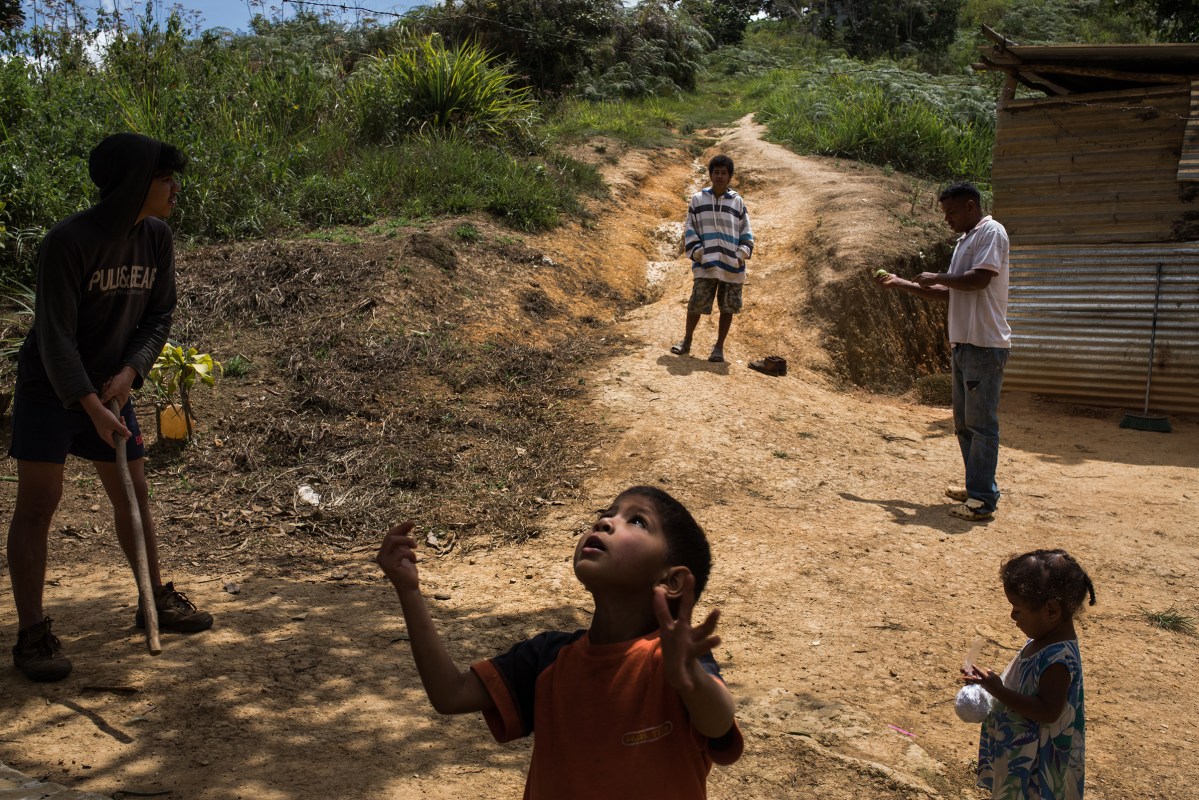
A family plays baseball in Turgua, a rural area near Caracas, in March. Wil Riera
I came across this family a few months ago. I was impressed with how they tried to be happy, playing baseball outside their house, when in their pantry there was just a bunch of yucca to eat that day. Even in the terrible and extreme circumstances this family is facing, they stopped to enjoy that particular moment. To me this represents part of the Venezuelan spirit, our desire for well-being and union.
Outside Caracas, life is harder. Now they can’t grow their own food. The products needed to do it are controlled by the government.
I’ve spent almost half of my life under the same government and I didn’t imagine I would see my country in such bad shape. It is so frustrating.
Andrea Hernandez
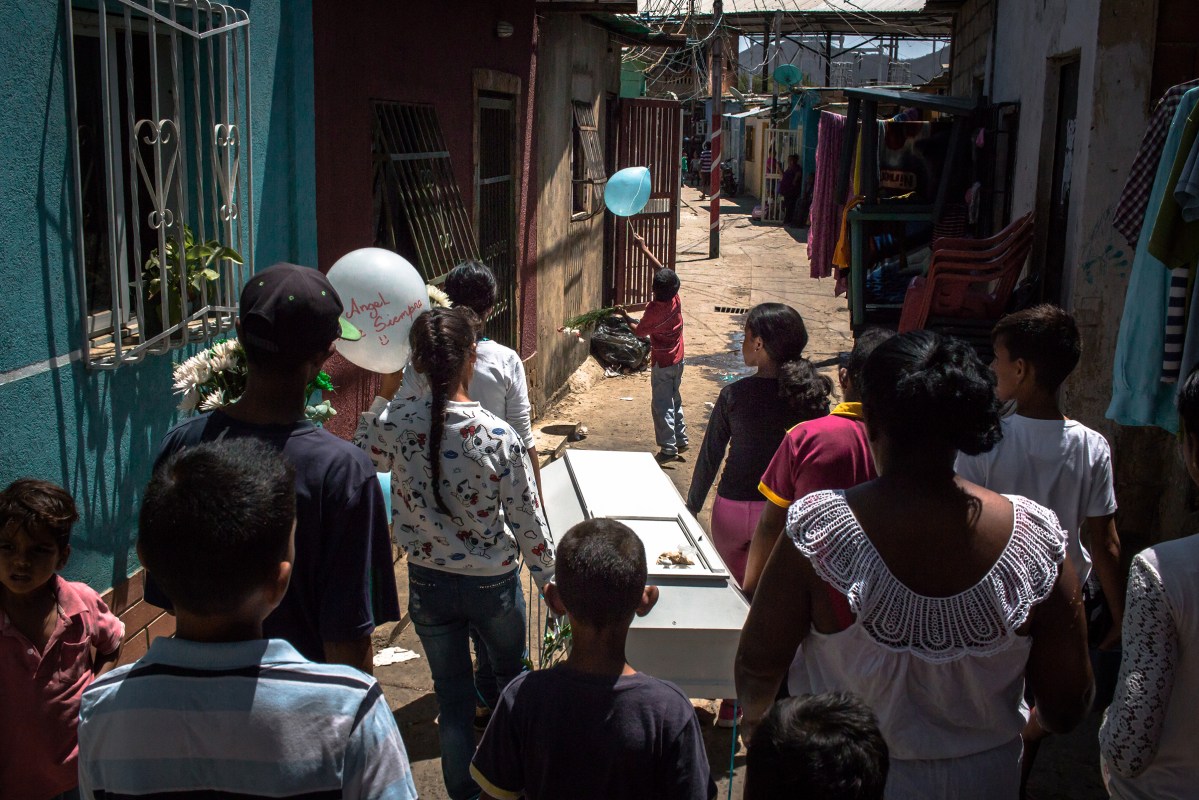
The boy’s casket is carried before burial in Puerto La Cruz, a port city east of Caracas, in February. Andrea Hernandez—El Estímulo
Angel was buried by his family and community at noon. The eight-year-old died of diphtheria, a disease that was supposedly eradicated from Venezuela 20 years ago. Illnesses like this one have reappeared because of the collapse of the healthcare system; with so many medicine shortages, they are extremely difficult to contain. We have seen the resurgence of malaria, with few tools to control it.
This is the story of a boy that passed away because his family thought he just had a fever. When they understood that something was not quite right, it was too late and the hospital where he was admitted had too few resources to save him. But what concerns me the most is that it is a story that repeats itself over and over again. And it looks like its frequency is increasing.
The faces of Angel’s family members were a mixture of shame and pain. They felt responsible for his death and were reluctant to share his story. But in the end they gave in. I had never attended a funeral procession as a photographer and I had never tried so hard to conceal my emotions.
Andrew Katz is TIME’s Senior Multimedia Editor. Follow him on Twitter @katz.